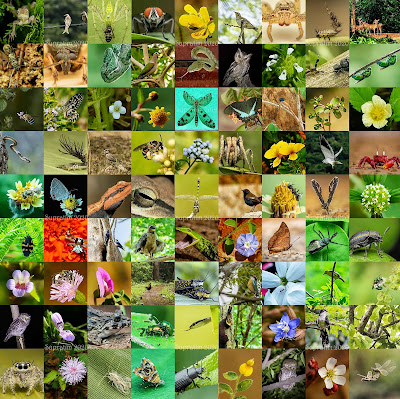POKAMO
celebrating the Nature
Monday, 13 July 2020
FUN-FILLED FIELD-DAYS
Friday, 5 June 2020
World Environment Day
Hi folks! It’s World Environment Day!
Every year we suddenly become more enthusiastic about nature and its conservation on this date and from the very next day, again we start acting against nature by hurting animals, cutting trees, promoting animal trades etc. But truly, this should not happen. We, the human beings, are the most intelligent superior animals and therefore, we need to change our own behaviour towards nature and wildlife. We must protect our mother nature who has been nourishing all the living beings including us since the age of creation on earth. We have to understand that even an ant has equal right to wander, feed on and share spaces with others as we do. Humans must be respectful to all the living beings in this world and must think about their conservation in the era of exploding human population and anthropogenic advancement. Hence, we should serve our mother nature every time.
On this day, I wish I could spend some time in nature; but there are no other options but to stay confined in our houses during this prolonged necessary lock-down period due to COVID-19 infection. The only way of celebrating this day is to cherish the good old field days spent in the village of Panchalingeswar and in the forest of Kuldiha Wildlife Sanctuary. These are one of my favourite places in Balasore, Odisha with full of fresh air and lush green scenic beauty that sooth my soul always.
The above collage has been prepared from my photo archives that consists of a few of the animals and plants that I encountered during my field days.
If you like this post, please share your thoughts about nature in COMMENTS section. Also, you can SHARE this page if you would like to.
Monday, 25 May 2020
THE BELLY RUB
Pollination is a simple process that involves the transfer of male part (pollen grain) from anthers to the female part (stigma) of a flower causing fertilization which leads to the development of fruits. Bees perform this action unknowingly like other pollinators do. The world of bees is extremely diverse and so does their behaviour in all aspects. Although, the basic biology of many bee species is still completely unknown; however, scientists have already studied several thousands of species all over the world. All the bees have unique behavioural aspects to live their life in the wild. Exploration of bee behaviour has unlocked new avenues of researches that are helping us to know about their foraging preference, foraging style, pollination efficiency etc.
Let's have a look at the short video clip down here which I have prepared to celebrate the World Bee Day (20th May 2020). This video was recorded inside a maintained garden at Ballygunge Science College Campus, Kolkata, India. This short visual will hopefully give you a clear idea about this incredible pollen collection behaviour of the bee. I have also described the process in detail in the following section.
In bare eyes, this process just looks like a busy bee buzzing near flowers here and there. But if you observe closely and precisely, you can understand what is going on with this fascinating foraging behaviour. 😎
Hope you enjoyed this short introduction and the video of this particular bee foraging style. If you like it, please provide your feedback in the COMMENTS below and don’t forget to SHARE this Pokamo Blog widely. If you feel interested to know more about nature, please get in touch with this blog! 😊👍
FUN-FILLED FIELD-DAYS
There was a time not long ago when we all used to roam about freely, meet our friends, gather in workplaces, travel a lot, dine out and live...

-
While we are busy performing our regular duties in life, there are other creatures in nature who are also serving their duties all...
-
There was a time not long ago when we all used to roam about freely, meet our friends, gather in workplaces, travel a lot, dine out and live...
